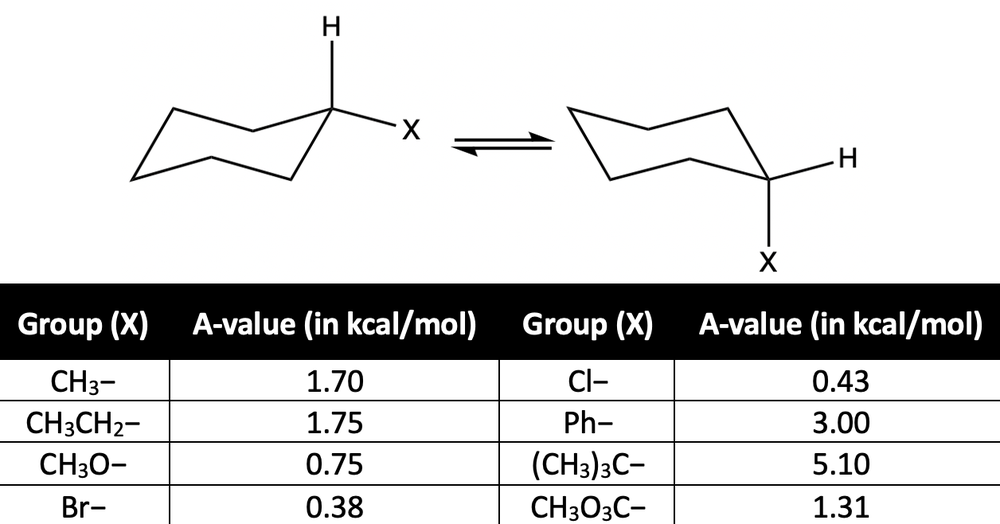- Download the worksheet to save time writing
- Start solving the practice problems
- If you're stuck, watch the video solutions
- See your summary to get more insights

When a substituent moves from the equatorial to the axial position in a chair-chair interconversion, its A value corresponds to its ∆G° value. A values are always positive numbers because most substituents prefer to be in the equatorial position. Calculate ∆G° and Keq for the chair-chair interconversions below using the given A value.

The conversion of the hydroxyl substituent in cyclohexanol from the axial to the equatorial position at 25°C has a ΔG° value of –1.0 kcal/mol. Determine the percentage of equatorial cyclohexanol molecules that exist at equilibrium.
Explain the following statement: "Compared to methylcyclohexane, tert-butylcyclohexane has a higher percentage of molecules with its substituent in an equatorial position."
The ∆G° for a substituent moving from the equatorial to the axial position in a chair–chair interconversion is the A value of a substituent on a cyclohexane ring. A value is a positive number because most substituents prefer to be in the equatorial position. Calculate the ∆G° and Keq for the following chair–chair interconversions using the given A values.

